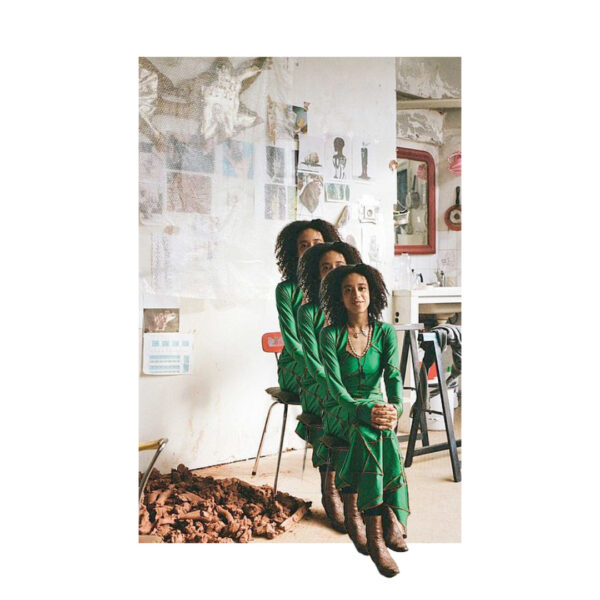It feels as though I have reached the end of the world, travelling from my nook in the southernmost part of the city, north to Pantin and into this sun-lit room of dreams. It is here, in the post-industrial epicentre of Paris’ regenerative mission, that the Magasins Généraux hosts its latest exhibition, Le Salon des Songes, created by artist and musician, Inès di Folco Jemni.
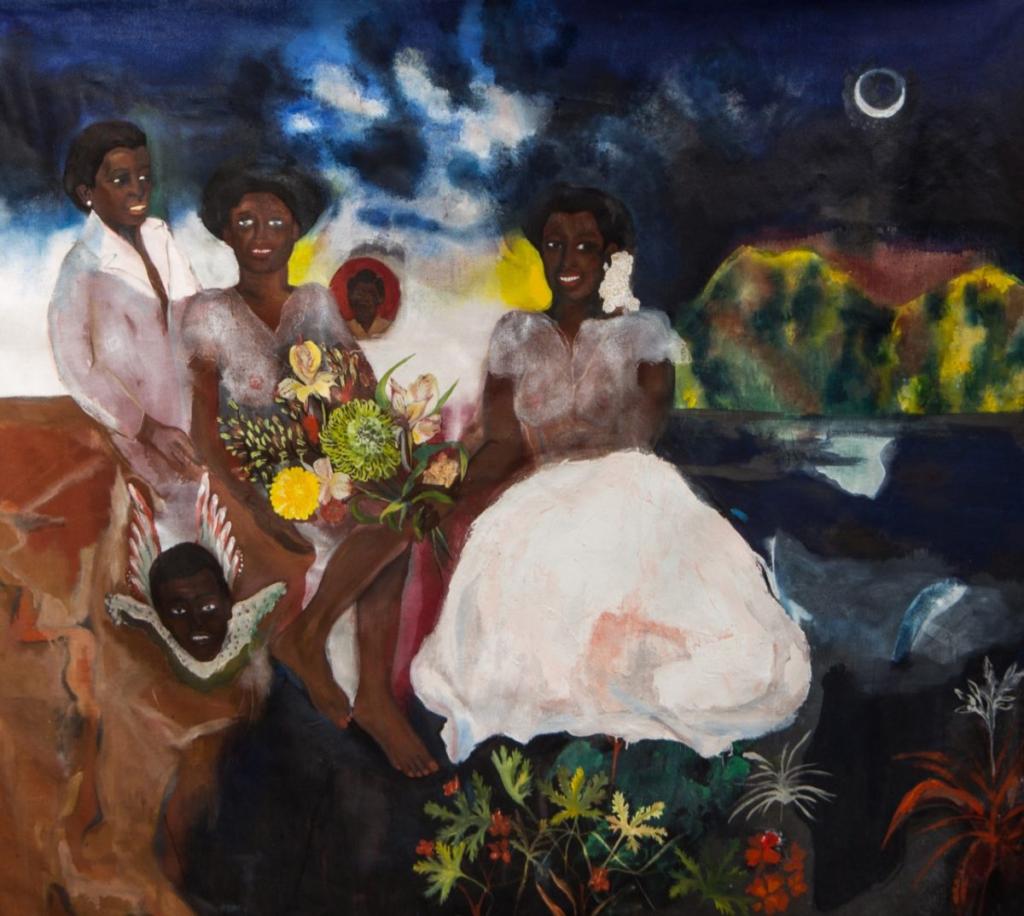
The space is white and cavernous. Windows, an amry of them, set the room into a frenzy of light. The first thing to note is that the paintings are not still, they move. Not fixed to a wall, behind a protective glass screen and signs warning: do not approach the artwork. These paintings are hung mid-air, suspended in the space, creating a maze of moving tapestries, dancing to the sound of the old record player, warbling away in the corner.
We have, indeed, entered a strange and ethereal world, full of creatures from myth and ancestral figures that we may not know but can perhaps recognise. This is Le Salon des Songes: the room of dreams. Or, more directly, it is a living room, a habitable space in which we find used velvet sofas and Persian carpets. There is a bookshelf, spilling over with poetry, with Audre Lorde and Eduardo Kohn. Inès di Foloc Jemni is inspired by the literature she loves and she invites us to discover it too. We are free to roam. We are free to sit, to listen and look around and make ourselves at home. This is now a communal salon, the world’s living room and a place of discovery, serenity and contemplation. For a moment, the chaos and noise of the city quiets, the bustle stills, and something begins to awaken. It seems the rules of the traditional gallery space are being transgressed: we, in turn, are asked to forget these learned behaviours and become children, playing with the space and with the art.
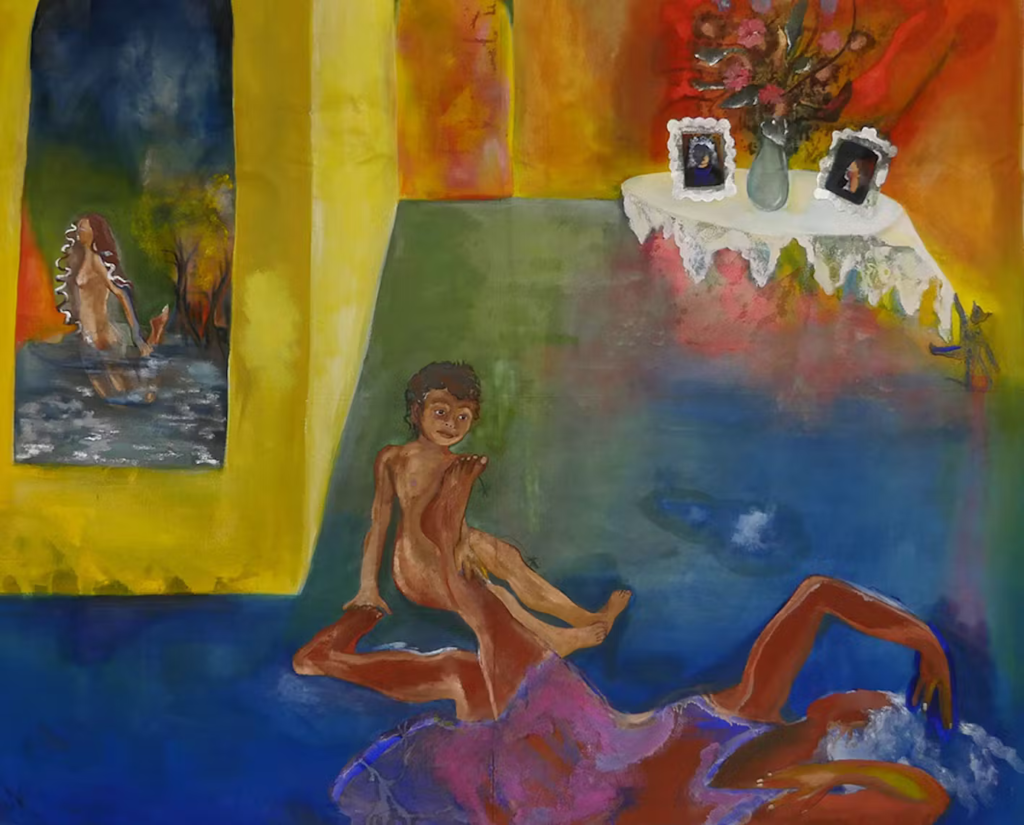
The artwork speaks. And it is speaking directly to us, with us, engaging us in a dialogue. ‘I would say that my art is the space where a dialogue between my dreams, my ancestors and myself takes place,’1 the artist defines her own work, putting into words the desire to transpose and transmit. Her paintings facilitate this open communication between artist and observer, thus creating a symbiotic place in which an idea or a feeling or a history can be shared. It is deeply personal and yet is able to convey a universal experience of family and the importance of understanding and preserving ancestral roots.

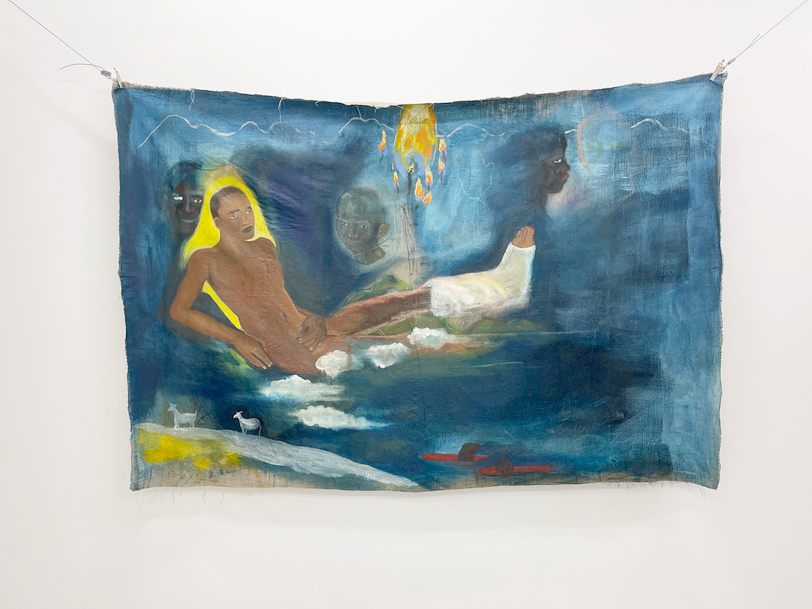
There is an undeniably strong presence of lineage within the work. Whether the artist is depicting her own family members, as in Trois Soeurs, or classical mythologic subject matter, with Venus, there is always an intimacy between the artist and the work. This is seen in the painting, Maher, which depicts a young man outlined in an otherworldly yellow halo, propping up a broken leg. The iconography of the image, with the figure reclining back, recalls Manet’s Olympia and links this foundational art historical work with the tragedy that inspired the painting of Zyed Benna and Bou na Traoré, two black men who were killed in anti-police protests in 2005.
An interesting dichotomy appears as she takes these floating materials, reminiscent of tapestries from the Middle Ages, and imbues in them the colours and figures which reflect her North African heritage. There is an ongoing dialogue between the past and the present, between the art historical canon that informs and inspires the artist’s work now, but also between the artist and her ancestors.
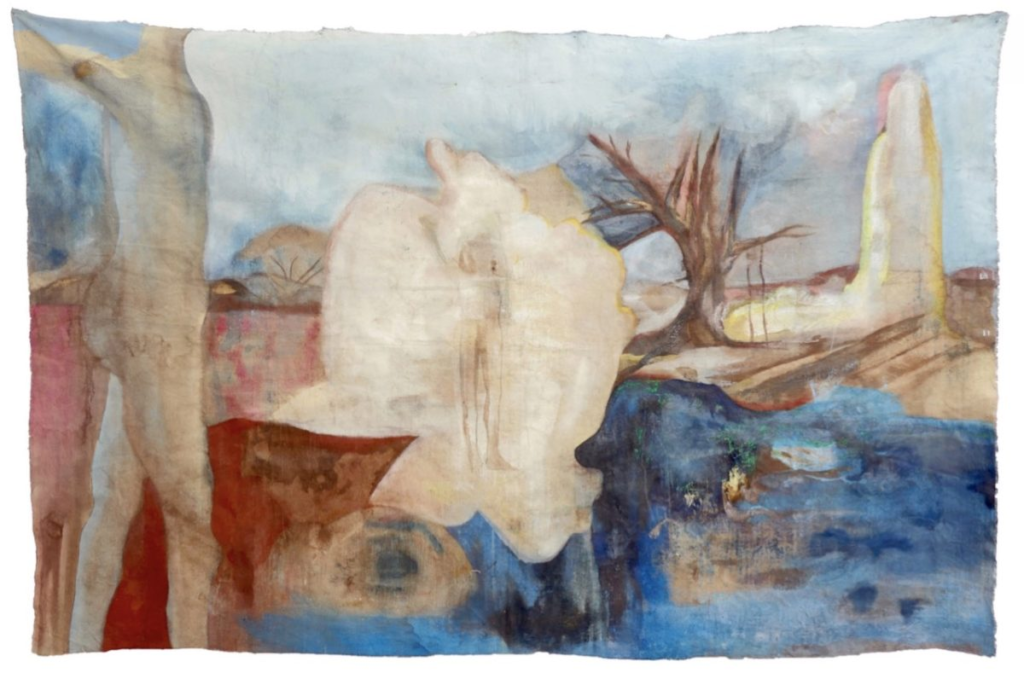
Inès di Folco Jemni on creating the exhibition: ‘The Salon des Songes is, first of all, an invitation to enter my world. It’s a way in which I can display all of my interests and my research. We enter into the exhibitions as we would enter into a house. I wanted to exteriorise everything that is going on inside my head and make the exhibition as friendly as possible.’2 This speaks to the heart of the work: walking through the exhibition space is truly like entering someone’s home, a lived-in space, brushing past canvases that move with the viewer, hearing the sounds of the smooth radio that come and go, it is like being a child entering a space where excitement is permitted and curiosity is encouraged. There is no right way to interact with the work, there is only the impetus to imagine and to dream. To perhaps sit, for a while, and let yourself be taken away.
Briá Purdy, 2024
Le Salon des Songes will be showing at the Magasins Généraux until April 7th 2024.
1 ‘Je dirais que mon art est l’espace d’un dialogue entre mes rêves, mes ancêtres et moi-même.‘ [translation by writer] taken from artist interview with Vogue France, Jordan Bako, March 2024. https://www.vogue.fr/article/ines-di-folco-jemni-salon-des-songes-exposition-interview
2 ‘Le Salon des songes, c’est d’abord une invitation à rentrer dans mon univers. C’est une façon de déployer tous mes centres d’intérêt et de recherches. On entre dans cette exposition comme on entre dans une maison. J’ai voulu extérioriser tout ce qui se passe à l’intérieur de ma tête et rendre cette exposition, la plus conviviale possible.‘ [translation by writer] Portrait de Inès Di Folco Jemni | Exposition-résidence « Inès DI Folco Jemni : Le Salon des songes », video interview with Magasins Généraux, Jan 2024. https://www.youtube.com/watch?v=geP04z9KTpg

